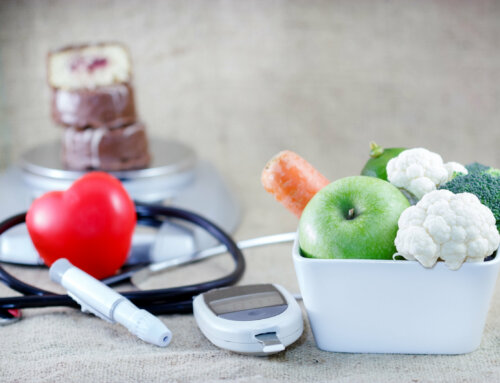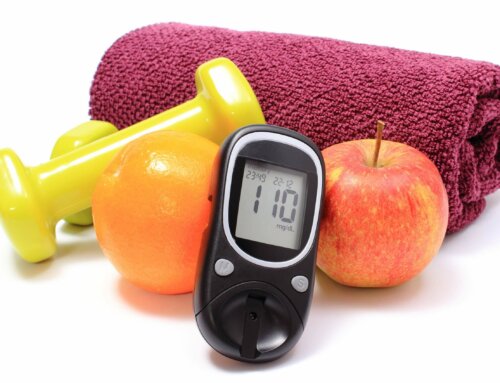Exercise is one of the best ways for someone with diabetes to utilize the extra sugar in their blood stream as well as help the liver produce less overall sugar. It can help suppress the appetite, increase hormones that give us a positive outlook, and boost your memory. Exercise will lower your blood sugar and you should be prepared. We were designed to move and thrive when we do. Let’s discuss some common truth and myths concerning exercise.
Myth: Doing aerobic exercise alone, like walking, swimming and bike riding, is all I have to do to control my diabetes and A1C levels.
Truth: According to the HART-D study-[The Health Benefits of Aerobic and Resistance Training in Individuals with type 2 diabetes], an article presented in the Journal of the American Medical Association states that combining both aerobic exercise with resistance training can have a true impact on reducing your A1C levels. Remember that resistance training should be done 2-3 times a week for 30 minute intervals and that a controlled A1C is 6.5-7.0%. Weight training can also include resistance bands, if you do not have access to machines. It can help build muscle, increase endurance, increase your resting metabolic rate and improve heart health.
Myth: You have to join a pricey gym to really get the proper workout to control diabetes.
Truth: Aerobic exercise can be done outside at a park, at a beach or in the mall which allows for any weather situation. Things to remember about aerobic exercise are that the minimum requirement should be 150 minutes per week. You should try to break that down into 5- 30 minute sessions in the week. If two or more days of exercise are skipped, the previously gained benefits are reduced.
Consistency is the key to aerobics. Doing 30 minutes will help your blood sugar levels but for weight loss, try to gradually increase your session to 60 minutes. You can break up this session throughout the day with several short walks. Swimming is the best aerobic routine for anyone with orthopedic problems, arthritis, obesity or neuropathy. Purchasing a pedometer is a good tool to track your daily steps. The eventual goal should be 10,000 steps a day which equals 5 miles.
Myth: I have to do formal aerobic exercise or I do not get any health benefits.
Truth: You can include things like yard work – mowing the lawn, raking leaves or gardening. House chores like vacuuming or washing windows and floors count. Consider parking far away from your destination to increase your walking time. Taking steps are a better alternative to the elevator and help build your overall endurance. Take your dog on short walks multiple times a day. Join teams such as a bowling league, horse shoe throwing club, community golf center, or a tennis team. Line dancing is a fantastic work out. Doing home exercise videos or DVDs are a wonderful choice. Use a bicycle to run local errands and include a helmet.
Myth: Exercise does nothing for older adults who are at risk of balance problems and falling.
Truth: Exercise programs that combine strength, flexibility, and balance are the best way to prevent falls for people over the age of 65. This was confirmed by the Cochrane review of over 100 studies. The most common reasons people fall are because of diabetic neuropathy, visual changes, medication side effects, poor balance, general weakness, vertigo, inner ear crystals as well as dementia. This generally leads to hip fractures and possible complications such as blood clots, pneumonia and a long hospitalization. Doing yoga, Tai Chi or Pilates along with balance exercises are extremely useful in preventing falls.
Myth: I do not have to plan ahead to exercise when I have diabetes.
Truth: Preparation is essential before exercise for people with diabetes. One should always eat before exercise and wait 30-60 minutes after the meal depending on the meal size. Consider a small snack prior to your routine if you do not have the time to exercise after a complete meal. Include a protein and carbohydrate. Try an Extend bar, Extend crisps or a Glucerna shake. Remember that exercise lowers the blood sugar. Carry glucose tablets with you in case of hypoglycemia. Wear comfortable, supportive well fitting closed-toed shoes with insoles and proper socks. Try putting powder between the toes to lower fungus risk from perspiration. Wear a form of medical I.D.-bracelet or necklace, stating Diabetes, in case of an emergency. Carry your cell phone and have ICE [in case of emergency] programmed into the phone. Never inject insulin into a limb you are using for exercise; this will increase your risk of hypoglycemia. Include a beverage such as water or sugar free decaffeinated drinks to prevent dehydration. Do not exercise when you are sick since your body is already under stress.
Exercise can be a feel good part of your day and the benefits are endless. Enjoy!
NOTE: Consult your doctor first to make sure my recommendations fit your special health needs.












Leave A Comment